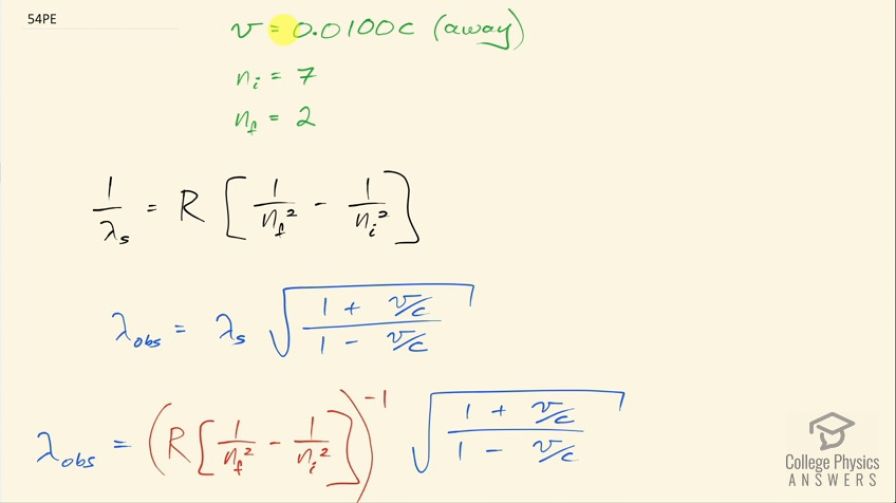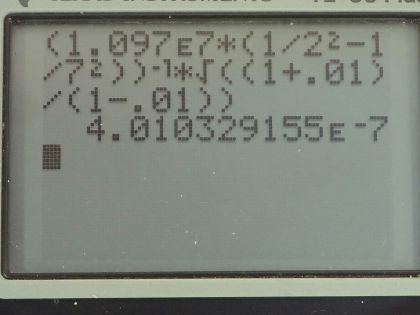Question
A galaxy moving away from the earth has a speed of . What wavelength do we observe for an to transition for hydrogen in that galaxy?
Final Answer
Solution video
OpenStax College Physics, Chapter 30, Problem 54 (Problems & Exercises)

vote with a rating of
votes with an average rating of
.
Calculator Screenshots
Video Transcript
This is College Physics Answers with Shaun Dychko. A galaxy is moving away from us with a speed of 0.0100c and I am going to write that as positive because our formula expects a positive value for velocity when that velocity is directed away from us and that's this formula here which is the relativistic Doppler effect. Hydrogen will be doing a transition of its electron from an initial state of 7 to a final energy level of 2 and we know what wavelengths will be emitted due to this transition and that's based on this formula here and I put a subscript s on the wavelength here to say that this is the wavelength of the source and that's going to be equal to Rydberg's constant times 1 over the final energy level squared minus 1 over the initial energy level squared and this is the reciprocal of the wavelength emitted. Relativistic Doppler effect tells us that the observed wavelength is going to be the source wavelength times the square root of 1 plus the velocity of the object or the galaxy in this case divided by c divided by 1 minus the velocity divided by c. So we can take this expression here, raise both sides to the negative 1 and this would give us the wavelength of the source and this is what we are going to substitute in place of λ s then and we do that here. So we plug in numbers now and that's 1.097 times 10 to the 7 per meter times 1 over 2 squared for the final energy level minus 1 over the initial energy level of 7 squared, take all that to the power of negative 1 and then square root 1 plus 0.0100c divided by c divided by 1 minus 0.0100c over c and that is 401 nanometers is the wavelength that would be observed. So this wavelength has been red-shifted because it's emitted originally as 397 nanometers but it's been elongated to 401 nanometers due to the velocity away from us of the galaxy.
